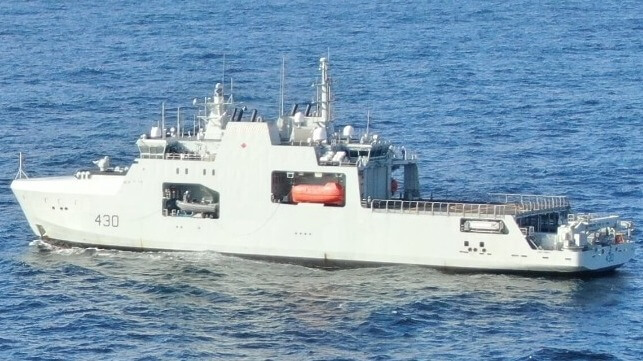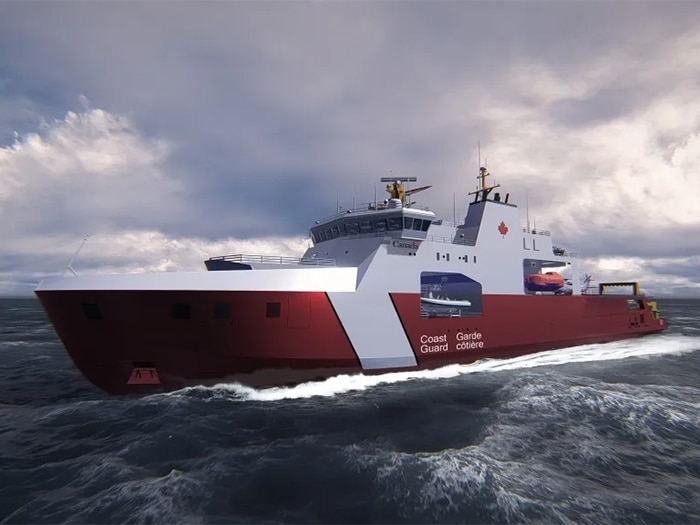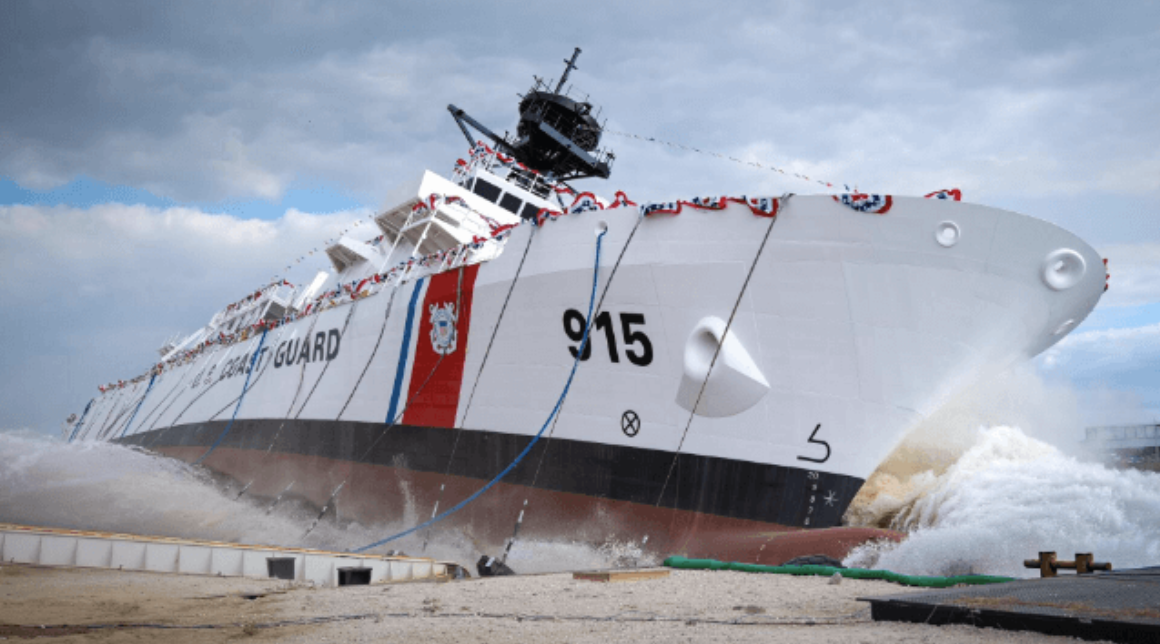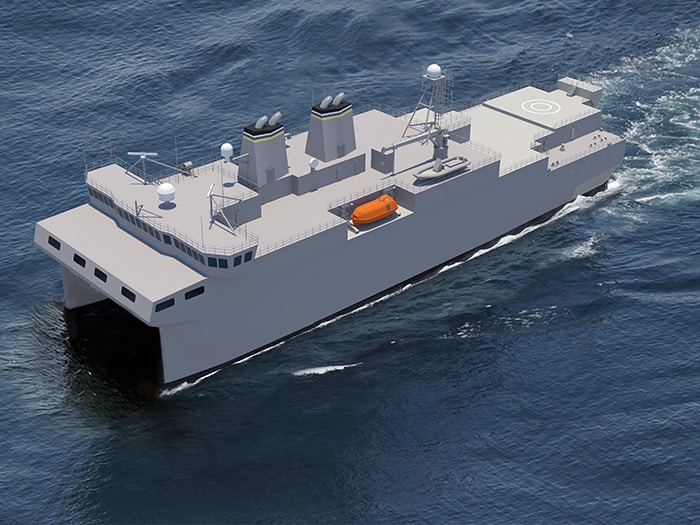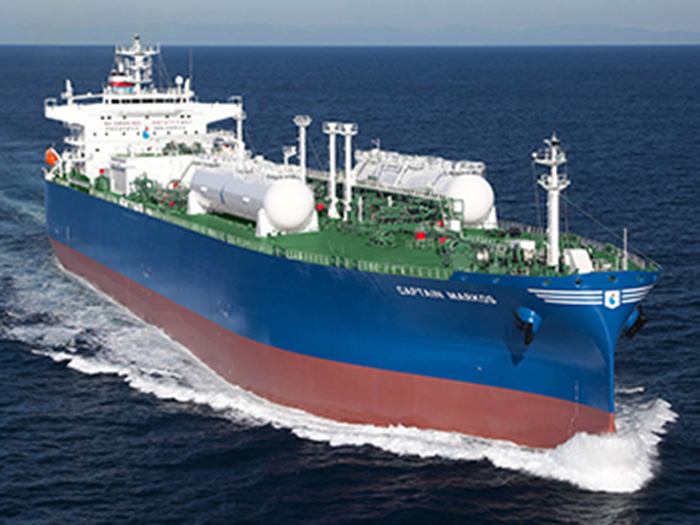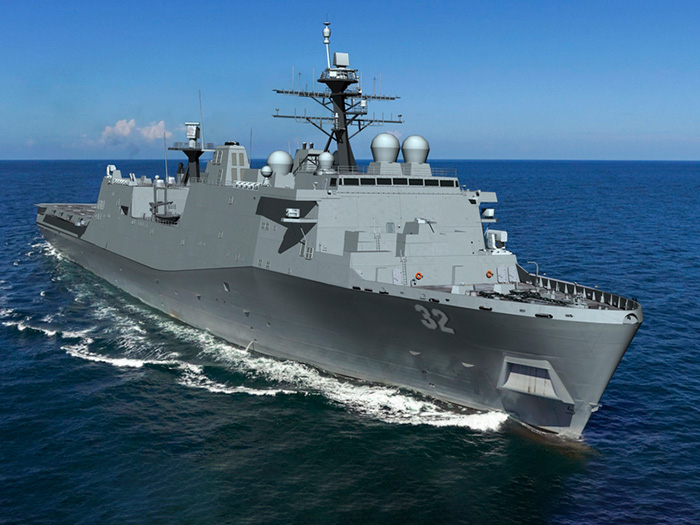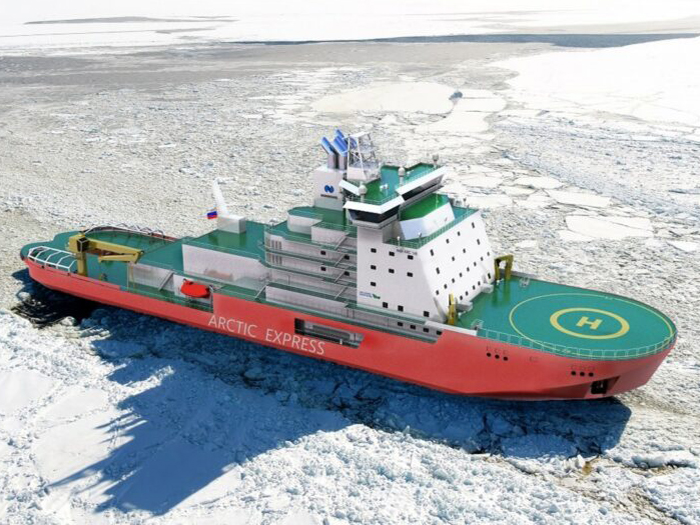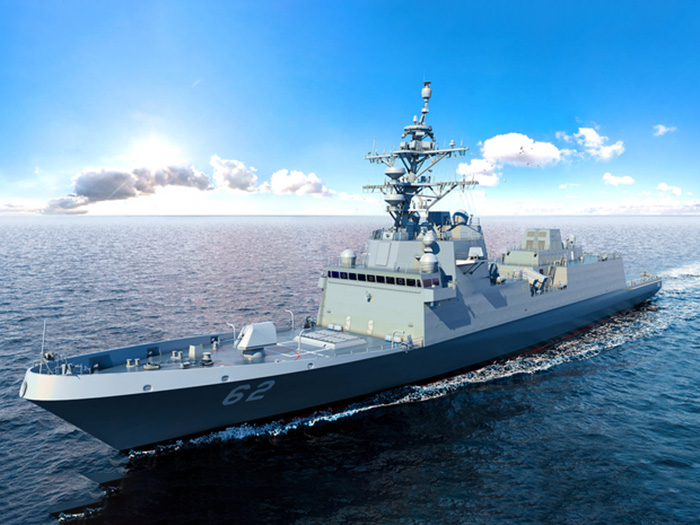|
Getting your Trinity Audio player ready...
|
Canada’s National Shipbuilding Strategy (NSS) has faced significant criticism over the years due to spiraling costs, a common issue with such large initiatives. However, besides cost overruns, the quality of the vessels produced under the NSS has also come under scrutiny. One such instance is the excess lead found in the drinking water systems of the NSS’ Arctic and Offshore Patrol Ships (AOPS).
More Problems Identified Aboard Canada’s Ice-Class Patrol Vessels
According to reports from the Ottawa Citizen, a publication that has closely followed the program’s progress, the NSS’ AOPS are experiencing more serious problems. These include episodic flooding of interior compartments, inoperable deck cranes, towing equipment that does not meet specifications, inadequate anchor holding power, and helicopter landing pads that are incompatible with certain aircraft. The Canadian government is now tasked with resolving these issues with the shipbuilder.
While some of the early hulls are no longer under warranty, requiring the Canadian Navy to bear some of the repair costs, three others are either still under construction or within the one-year warranty period. Irving Shipbuilding, the company responsible for building the vessels, has described the process of addressing these issues as a “normal but essential element of shipbuilding.”
The Canadian Navy has assured the Ottawa Citizen that all identified issues are either being fixed or are undergoing analysis for solutions. However, a critical shortage of personnel in the Royal Canadian Navy means that only one Arctic and Offshore Patrol Ship can be deployed at a time, leaving the remaining hulls available for maintenance.
Despite these challenges, the Canadian Coast Guard is set to receive two AOPS-based cutters for its own use, with the first one already under construction.
Conclusion
The issues identified aboard Canada’s Ice-Class Patrol Vessels highlight the complexities and challenges involved in large-scale shipbuilding projects. While these problems are being addressed, they underscore the importance of thorough quality control measures in such initiatives.
FAQs
- Are the identified issues with Canada’s Ice-Class Patrol Vessels affecting their operational capabilities?
- Yes, the identified issues have impacted the operational capabilities of these vessels, leading to maintenance and deployment challenges.
- What steps is the Canadian government taking to address the problems with the vessels?
- The government is working with the shipbuilder to resolve the issues and ensure that the vessels meet the required standards.
- How has Irving Shipbuilding responded to the criticism of the vessel’s quality?
- Irving Shipbuilding has described addressing these issues as a normal part of the shipbuilding process and is working to rectify them.
- What impact do the problems with the Ice-Class Patrol Vessels have on the Canadian Navy’s operations?
- The issues have led to a shortage of deployable vessels, impacting the Navy’s ability to conduct operations effectively.
- What are the future plans for the Canadian Coast Guard regarding these vessels?
- The Canadian Coast Guard is set to receive two AOPS-based cutters for its own use, with the first one already under construction.


